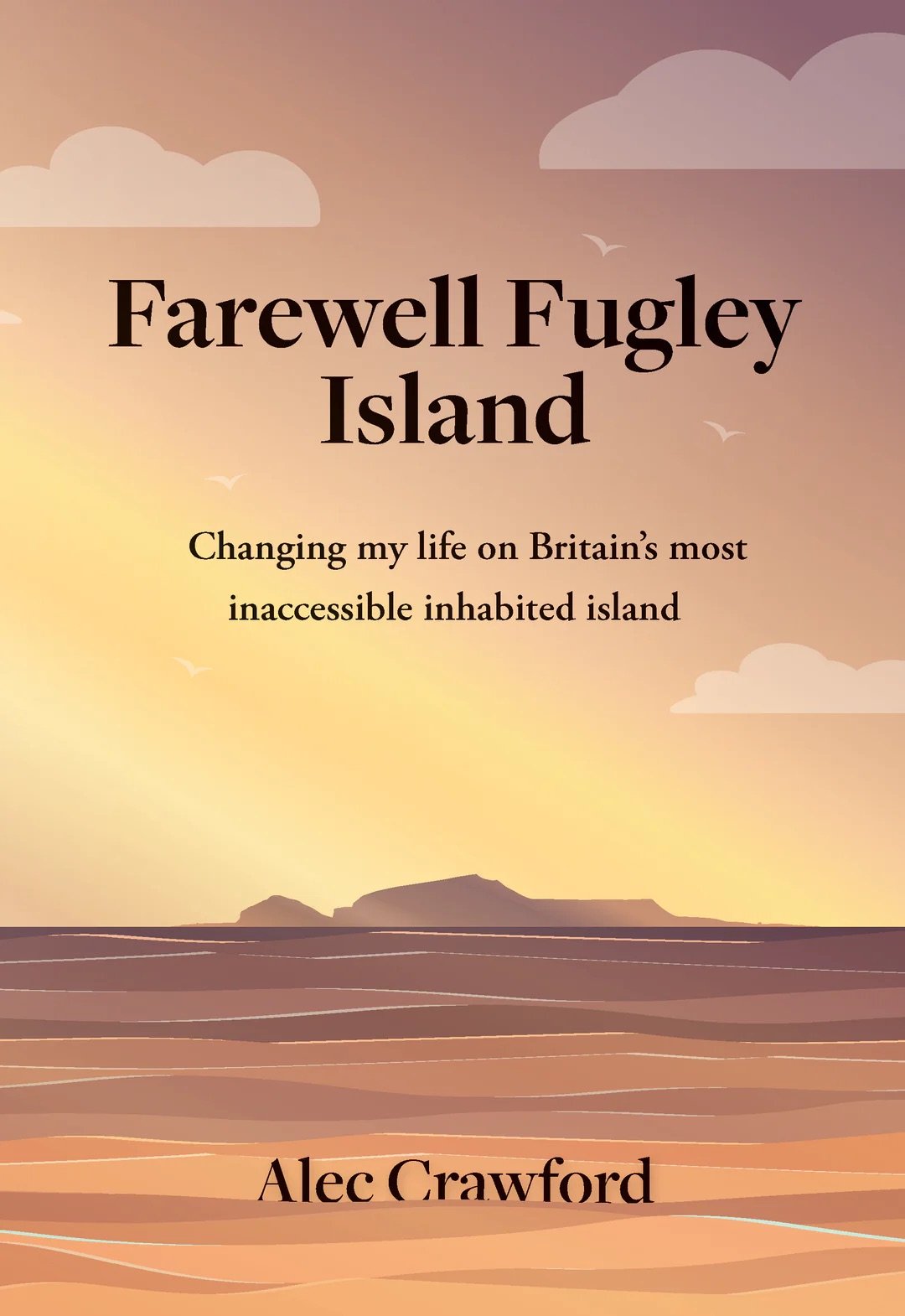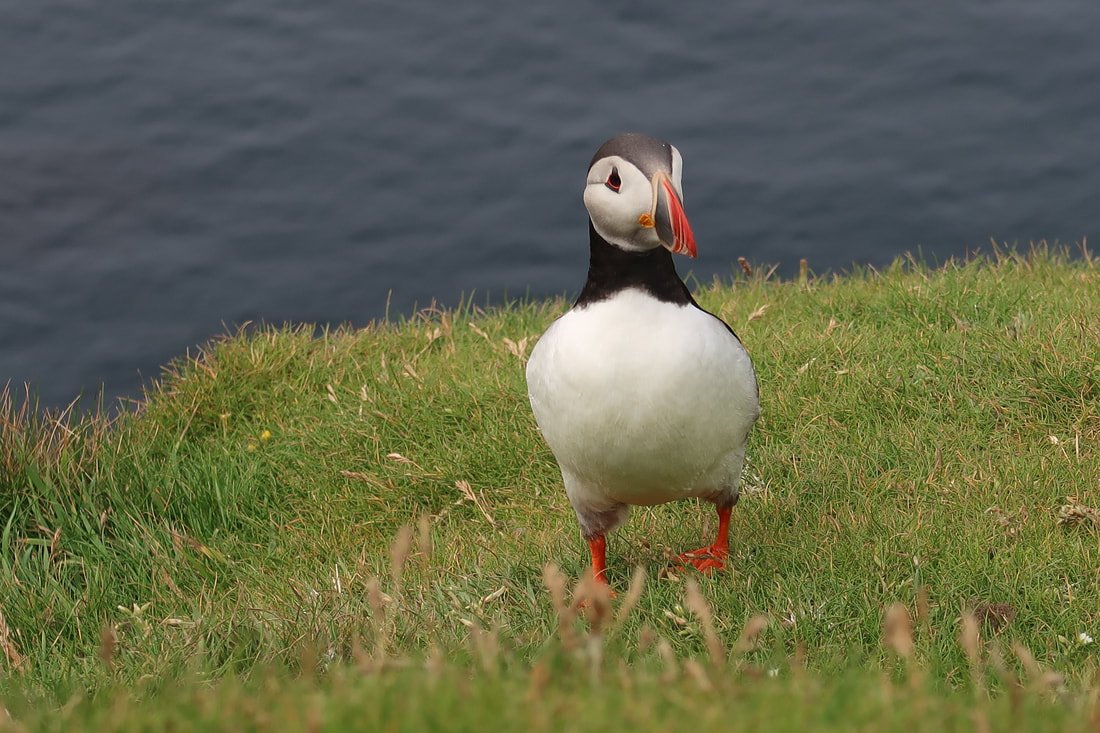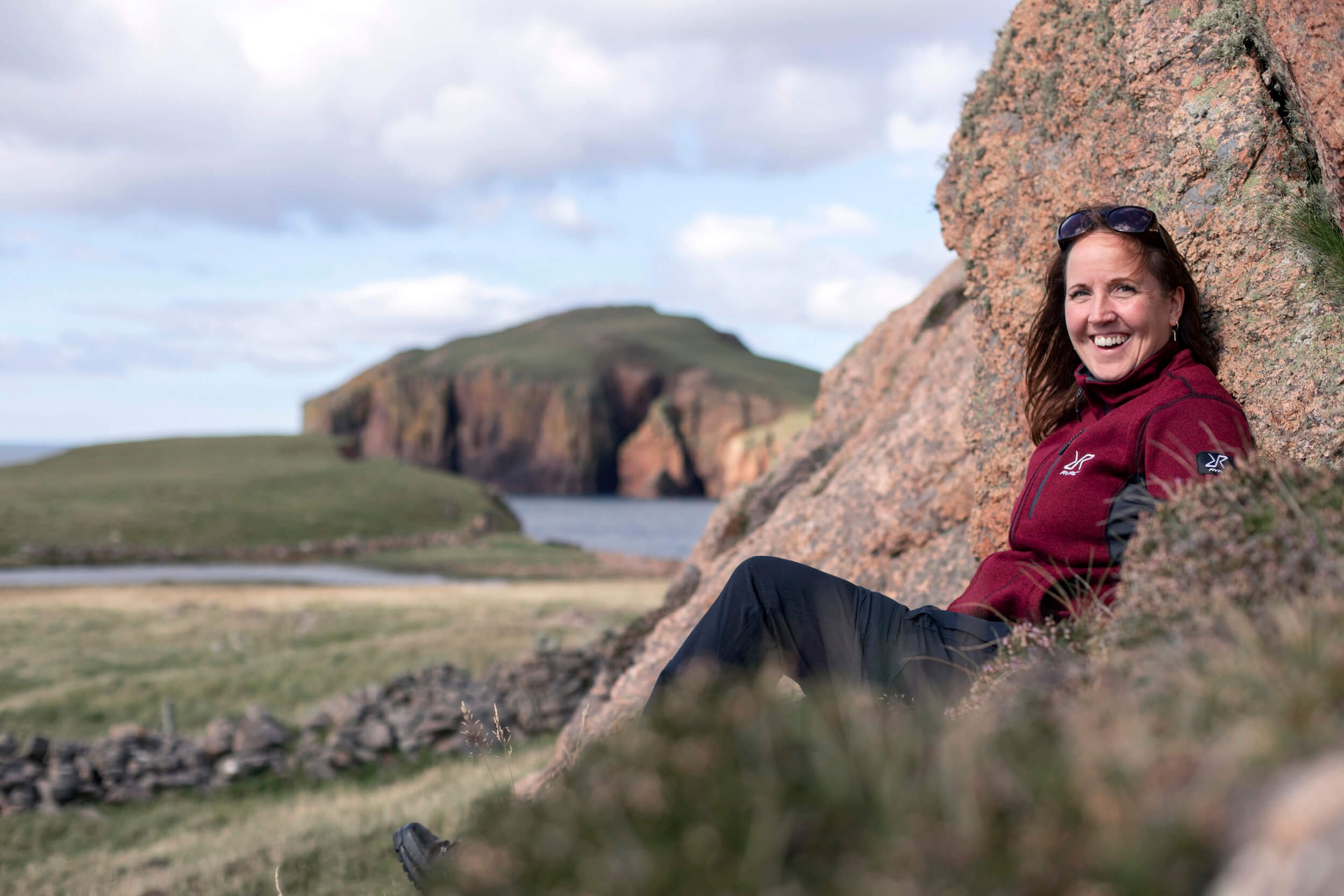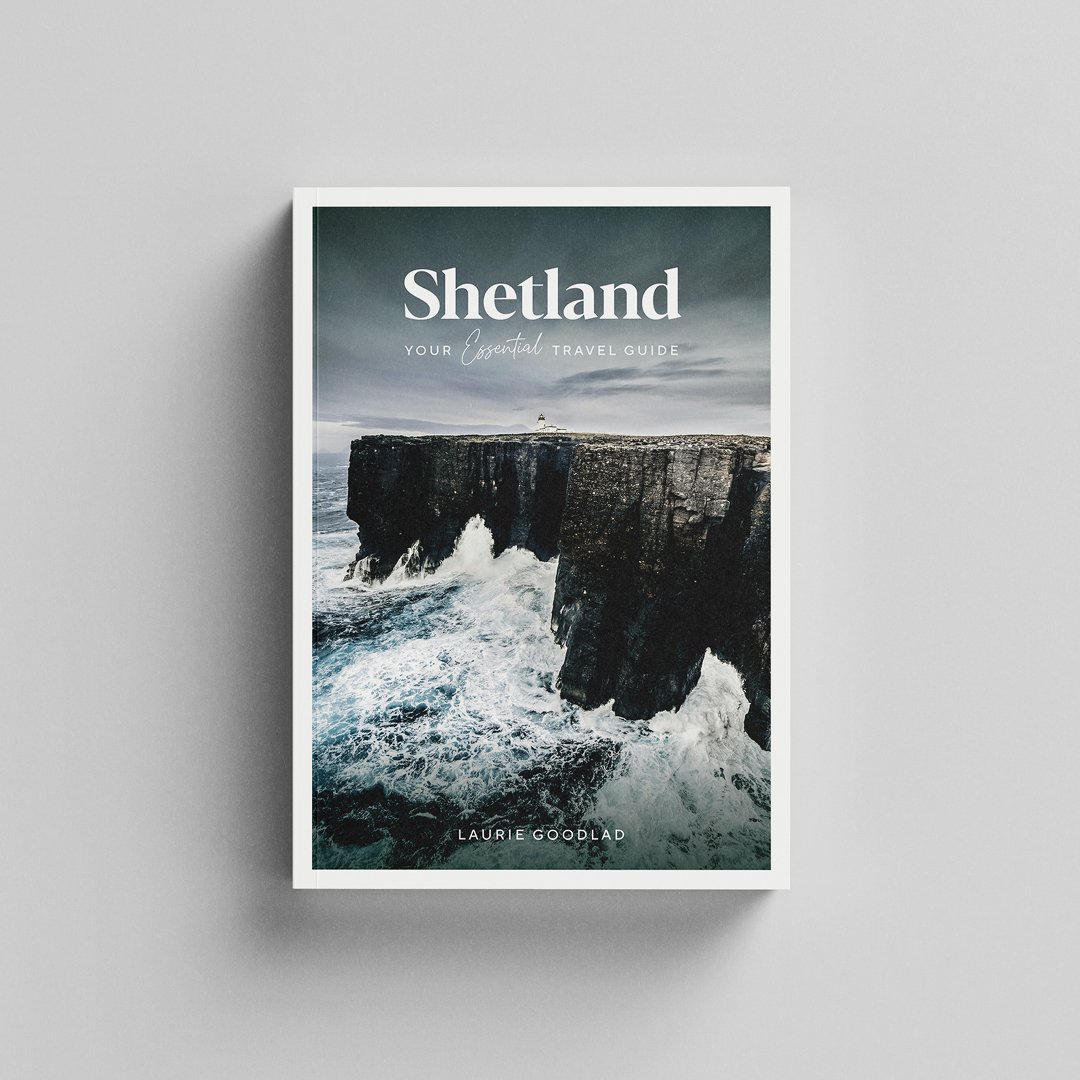Scottish travel blog from an islander’s perspective
A day in Westray, Orkney’s Queen o’ the isles
Orkney’s sixth-largest island, Westray, packs a real punch. Bursting with life and brimming with wildlife, it has retained its sense of identity and feels the most ‘Orcadian’ of all the islands we visited, with a distinct sense of community.
Westray can feel remote from Kirkwall’s ‘bright lights’ but is only a short hop by air or sea.
Flanked by wild Atlantic waters, Westray’s coastline offers some of Orkney’s best seascapes and dramatic cliffs. The island has a busy and vibrant feel with sweeping sandy beaches and a gentle, fertile interior dominated by farming.
Book review: From Honky-tonks to Helicopters
Lerwick-born Douglas Sinclair is well-known as a local author who has particularly enriched our knowledge of Lerwick with his fantastic books Old Lerwick: People and Places (2017) and Old Lerwick: Lanes and Lodberries (2021). From Honky-tonks to Helicopters is a real break away from what we have come to expect from Douglas, who has been publishing historical features since he retired in 2001. It captures a moment of significant change in Shetland with the coming of oil to the islands and all the societal shifts brought with it.
Blue Skies Cottage, Auchmithie (Angus) review and itinerary for your stay
Auchmithie, where we were staying, is a former fishing village that predates Arbroath by several centuries, and although many of the small cottages were built as farming cottages supporting the rich farmland stretching far inland from the coast, creating a landscape of gently rolling hills, the village is best known for its fishing heritage.
Book Review: Farewell Fugley Island
Farewell Fugley Island was written by Alec Crawford and published by the Shetland Times in 2022. Alec, a wreck diver, arrived in Foula in the 1970s and spent six years living and working in the island, salvaging precious wreck material from the remains of the great liner Oceanic that was lost during the First World War.
The book is more a social history account of life on the island in the 1970s than an examination of diving the wreck. Examining a time of significant change on the island, Alec arrived as the last of the island’s cows were sold, and the community shop was set to close. Several young people had left, leaving a question mark over the future viability of this remote island that marks Shetland’s western horizon.
Review: Shorehaven, Burrafirth, Unst review and itinerary for your stay
Shorehaven, where we were to spend the weekend, dates back to 1854 when Hermaness Lighthouse was built to aid navigation. Clinging to the hostile slopes of Muckle Flugga, a rocky outcrop off the north coast of Unst, Britain's most northerly lighthouse still shines a guiding light across the water to those at sea – Shorehaven forms part of the story of this iconic lighthouse.
A walk to Levenwick Broch in Shetland’s South Mainland
The spectacular ruins of Levenwick Broch, one of around 120 known broch sites in Shetland, has always intrigued me, and I’m ashamed to say that, after driving up and down the A970 hundreds – if not thousands – of times, It’s taken me 35 years to get there.
Book review: Call of the Running Tide
“I’m passionate about the past, grateful for the present and look forward to a bright and prosperous tomorrow.”
Call of the Running Tide, written by Louis Johnson, and one of the latest publications from the Shetland Times sold out soon after it was released just before Christmas, has been brought back into stock with a hasty reprint.
Up Helly Aa – top tips for enjoying Shetland’s festival of fire
Throughout Shetland, from January to March, the islands celebrate the festival of Up Helly Aa, with 12 Fire Festival and Up Helly Aa celebrations punctuating the darkness of winter with fiery processions, Viking dress and the world-renowned all-night parties that follow the burning of a Viking longship.
Book Review: Shetland Mist
Shetland Mist is a haunting and evocative tale of faith, life, love and loss, set against the backdrop of 19th century Shetland, where families toiled, day in and day out to survive, eking out a meagre existence from the harsh and unforgiving land and sea.
Christmas and New Year in Shetland past
In a few days time, just as we are taking down the Christmas decorations, and boxing them up for another year, Foula, our most westerly island will celebrate Christmas.
In the past, Christmas in Shetland meant something very different; we even held it on a different day. Known as Yule, it was a time of celebration and tradition, much of it stemming from pagan rituals and beliefs.
Today, Foula is one of the last places to celebrate the old calendar dates for Christmas and New Year celebrations, on the 6th and 13th of January.
9 Things to Do in a Day on Jura
Jura, known as the ‘Deer Island’, and famous as the place where George Orwell wrote his dystopian novel, 1984, and where the pop band KLF burnt one million pounds in cash in a boat shed in 1994, sits off the west coast of Scotland and is part of the Inner Hebrides. With a population of around 250, the island has a close-knit community dominated by the ever-present Paps of Jura, visible from most parts of the island and giving the island a mountainous and rugged feel.
The Peerie Neuk, Unst review and itinerary for your stay
The Peerie Neuk is a tiny “hut” in Unst and part of the tiny-house movement. This architectural and social movement advocates downsizing living spaces, simplifying interiors and living with less. As someone who resides in a constant state of clutter and chaos, kicking off my boots at the door of The Peerie Neuk was nothing short of cathartic!
Book Review: Shetland's Boats: Origin, evolution and use by Marc Chivers
Shetland's Boats: Origin, evolution and use is the book every boat enthusiast has been waiting for. There has yet to be a comprehensive study of Shetland's vernacular boats so rigorously carried out since Adrian Osler's The Shetland Boat: South Mainland and Fair Isle, originally published in 1984. This publication has, until now, been the 'go-to' work on Shetland's vernacular boats. But, for the first time, we now have a thorough compendium of Shetland's boats through history, all meticulously researched and interpreted, in one place.
11 Things to do in Islay
Islay loomed large on the horizon as we ploughed past Kintyre from Kennacraig with CalMac Ferries. Passing Gigha, we headed towards the Sound of Islay – the narrow channel separating Islay and Jura – seeing a few solitary harbour porpoises along the way. Famed for its distilleries, fertile landscapes and island charm, Islay is known as the “Queen of the Hebrides”.
Shetland’s haunted places
Tomorrow is hallowe’en, that time of the year when the veil between this world and the next is at its thinnest, and we can expect to experience the most paranormal activity. Shetland had its own unique blend of hallowe'en tradition influenced by Christianity, with its roots firmly placed in old pagan customs.
Where in Shetland do you find …
Puffins are one of the Northern Isles’ best-loved summer visitors who arrive back from winter at sea to nest between April and mid-August. Sumburgh Head is the most accessible place to see them without having a lengthy walk. The nature reserves of Hermaness and Noss are also excellent places to look out for these charismatic little seabirds.
Orkney’s lesser-known Neolithic sites
Orkney is perhaps best-known for its mind-blowing Neolithic archaeology that continues to rewrite much of what we know about prehistoric Britain, so much so that, in 1999, UNESCO designated World Heritage status to what has colloquially become known as the Heart of Neolithic Orkney.
The Boatman's House, Burrafirth, Unst review and itinerary for your stay
"We never feel like we own it; we are custodians looking after it for the future," Rachael told me as she explained the history and her deep-seated love of the Boatman's House.
5 things to do in Shetland in autumn
The days are changing as the seasons switch. And, like a light that’s shut off, it feels as though the dial has been turned to autumn as summer fades into memory once more. The nights are visibly darker, and the air has changed; there’s a sting in its embrace, and I feel myself turning my collar against it.Yet, despite this change, the daylight is still long enough to make the most of the fine days, and the chill in the wind isn’t enough to leave us lounging by the fir [...]
A day in Whalsay with the Heritage Centre and friends
Symbister Harbour, Whalsay Every great adventure starts with a boat, surely? It certainly feels like that as you dart north, rushing to make the ferry on time, watching the clock anxiously and praying you don't meet a tractor en route.The Whalsay ferry has an altogether different feel to the North Isles ferries; the journey is longer, and booking is strongly recommended if you want to ensure you arrive – and depart – on the ferry you've chosen. It also has a more 'Shetland' f [...]
More about Shetland
Shetland is in my blood. Visit my blog for local insights, tips and advice.
















































The Clift Hills are a series of low-lying hills (200-300 metres) that rise from Clift Sound. Royl Field (293m) is the largest of these hills and the second largest in Mainland Shetland (and the third largest in Shetland). During the Second World War, a de Havilland Mosquito Mk VII “DZ642” of the 627 Squadron, Royal Air Force, crashed on Royl Field on 22nd November 1944.
The Clift Hills dominate every area of the South Mainland. From Burra to the west, they rise steeply from the sea below, creating a ‘wall’ between east and west. In summer, low clouds and fog often threaten to spill over the hills from the east. When the South Mainland lies shrouded in a blanket of mist, the sun usually shines to the west, the hills providing a barrier against the encroaching sea fog.